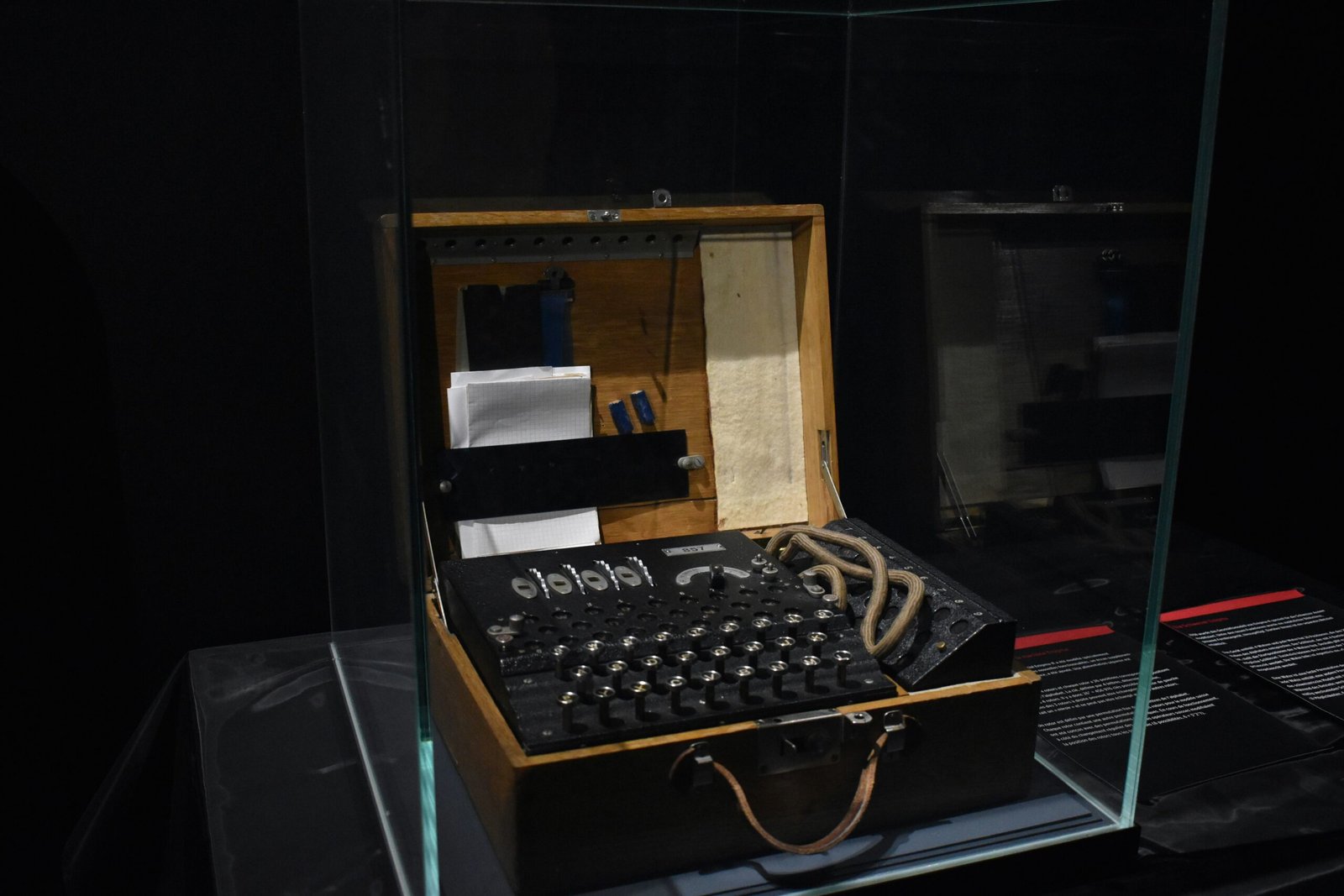Augmented Reality: The Future of Interactive Learning You Can’t Miss
 Photo by John Schnobrich on Unsplash
Photo by John Schnobrich on Unsplash Introduction to Augmented Reality in Education
Augmented Reality (AR) is an innovative technology that overlays digital information onto the real-world environment, providing an enhanced view that combines the physical and virtual worlds. With applications spanning various fields such as healthcare, entertainment, manufacturing, and education, AR is rapidly changing how we perceive and interact with our surroundings.
In the realm of education, AR is heralded as a groundbreaking tool that has the potential to revolutionize the traditional learning experience. By integrating digital content with physical objects and environments, AR provides learners with immersive, interactive experiences that enhance understanding and engagement. From virtual field trips that transport students to historical sites to 3D visualizations of complex scientific concepts, the possibilities are vast and varied.
The implementation of AR in education is not merely a futuristic concept; it is increasingly becoming more mainstream. Educational institutions, ranging from primary schools to universities, are recognizing the potential benefits of AR and investing in its integration. Start-ups and established technology companies are also pouring resources into developing AR applications tailored specifically for educational purposes. This growing interest and investment are indicative of the significant impact that AR is expected to have on the educational landscape.
As we delve deeper into the subject, we will explore various benefits and practical implementations of AR in education. From enhancing student motivation and collaboration to providing personalized learning experiences, augmented reality holds promise for addressing some of the key challenges faced by modern educators and learners. The following sections will provide comprehensive insights into how AR is shaping the future of interactive learning and why it is a development you can’t afford to miss.
The Evolution of Educational Tools and Methods
Over the years, educational tools and methods have undergone significant transformations, adapting to the needs and challenges of different eras. Initially, education relied heavily on traditional chalkboards and textbooks, which provided a static and, at times, limited way to disseminate knowledge. These methods, while foundational, could not cater to the diverse learning styles of students, often resulting in a passive learning experience.
With the advent of overhead projectors and early computers in classrooms, education began to shift. These tools enabled interactive lessons and introduced multimedia content, making learning more engaging. Teachers could incorporate slideshows, videos, and audio elements into their lessons, which enriched the educational experience and allowed for more dynamic teaching methods.
The digital age brought about one of the most transformative changes in education through the introduction of personal computers and the internet. Digital classrooms emerged, where information was no longer confined to textbooks. Students could access online resources, participate in virtual discussions, and learn coding and other digital skills. This period saw a surge in the use of educational software and e-learning platforms, making education more accessible and tailored to individual learning paces.
Despite these advancements, the integration of augmented reality (AR) represents the next significant leap in educational tools. AR has the potential to create immersive, interactive environments that transform abstract concepts into tangible experiences. For instance, a biology student using AR can visualize and interact with 3D models of the human body, making complex subjects easier to understand and remember. This level of engagement caters to various learning styles, ensuring that students remain actively involved in their education.
The evolution from chalkboards to digital classrooms has continually enhanced the learning experience, but AR stands out by providing an unprecedented level of interaction and immersion. As educational tools continue to evolve, AR is poised to play a crucial role in shaping the future of interactive learning.
How Augmented Reality Enhances Learning Experiences
Augmented Reality (AR) has the potential to transform traditional educational models by enhancing learning experiences through interactive simulations, 3D models, and immersive environments. By overlaying digital content onto the physical world, AR allows students to engage with subjects in a more dynamic and intuitive manner, making abstract or complex concepts easier to understand.
One of the primary ways AR enriches education is through interactive simulations. For instance, in science classes, students can conduct virtual experiments that mimic real-world scenarios. Applications such as AR Chemistry allow learners to visualize molecular structures in three dimensions, manipulate them, and observe reactions that would be challenging or dangerous to perform in a standard classroom. This hands-on approach improves comprehension and retention by providing experiential learning opportunities.
Furthermore, 3D models facilitated by AR provide an invaluable tool for subjects like history and art. Imagine a history lesson where students can explore an ancient Roman amphitheater in 360 degrees, or an art class where learners can walk through a virtual gallery and interact with famous sculptures and paintings. Applications like Google Expeditions enable students to take virtual field trips, offering an immersive experience that textbooks simply can’t match. Such experiences foster a deeper connection with the material, enhancing both engagement and understanding.
Additionally, AR creates fully immersive environments that make learning a multi-sensory experience. Programs such as QuiverVision allow students to color a printed page and then see their drawings come to life through AR, blending creativity with technology in a way that’s uniquely captivating. This melding of the physical and digital worlds stimulates different areas of the brain simultaneously, promoting a richer educational experience.
Examples of AR applications in education are numerous and varied. Zspace provides simulations for healthcare training, allowing medical students to practice procedures in a risk-free setting. Anatomy 4D offers an interactive guide to the human body, enabling a level of detail previously impossible in a classroom setting. These applications allow students to visualize and interact with complex subjects, making learning both more effective and enjoyable.
Benefits of Augmented Reality in Education
Augmented Reality (AR) is proving to be a transformative force in the realm of education, offering a multitude of benefits that traditional methods cannot match. One of the most compelling advantages is the significant increase in student engagement. By overlaying interactive, 3D content onto the physical world, AR captures students’ attention and makes learning far more engaging than static textbooks or lectures. This heightened level of engagement naturally leads to improved retention rates, as students are more likely to remember what they see and do, rather than what they read or hear.
Another key benefit of AR in education is its ability to offer personalized learning experiences. Through AR applications, educators can tailor content to suit individual learning paces and styles, making it easier for each student to grasp complex concepts. For instance, visual learners can benefit from 3D visualizations, while kinesthetic learners can interact with virtual objects to better understand the subject matter. The adaptability of AR to different learning preferences makes it an invaluable tool in the modern classroom.
Moreover, AR holds the promise of creating a more inclusive and accessible educational environment. By breaking down language barriers, AR tools can provide real-time translations, enabling students from diverse linguistic backgrounds to participate fully in the learning process. Additionally, AR can bridge physical barriers by simulating environments and scenarios that may be otherwise inaccessible to some students, such as those with physical disabilities. This inclusivity ensures that a wider range of students can access high-quality education tailored to their needs.
Incorporating AR into educational settings offers a dynamic and interactive approach to learning, one that, through increased engagement, improved retention, personalized experiences, and inclusive accessibility, is poised to redefine the future of education. As technology continues to evolve, the utilization of AR in classrooms will likely become an indispensable component of modern pedagogical strategies.
Challenges and Considerations with Implementing AR
While augmented reality (AR) holds transformative potential in educational settings, integrating this technology into classrooms is not without its challenges. One major consideration is cost. High-quality AR hardware, such as headsets or advanced tablets, and the development of interactive AR content can be prohibitively expensive for many schools. Balancing these costs with budget constraints requires careful planning and, in some cases, creative funding solutions such as grants or partnerships with technology companies.
Another significant challenge is the need for appropriate infrastructure. Reliable high-speed internet, robust WiFi, and adequate technical support are fundamental requirements for a successful AR implementation. Schools situated in areas with subpar internet connectivity may find it particularly challenging to leverage AR effectively, which could exacerbate existing educational disparities.
Teacher training is equally critical. Introducing AR into the classroom necessitates comprehensive professional development to ensure educators are confident and competent in using this new technology. This training should encompass both the technical aspects of operating AR tools and the pedagogical strategies to integrate AR seamlessly into existing curricula. Regular workshops and continuous support can facilitate teachers’ adaptation to these new instructional technologies.
The digital divide is a pressing issue that cannot be overlooked. Students from underprivileged backgrounds may lack access to the personal devices necessary for engaging with AR content outside school environments. To mitigate this disparity, schools could consider lending programs, where students can borrow the required technology, as well as involving community centers to provide additional support and resources.
In addressing these challenges, adopting best practices is essential. Schools should undertake pilot programs to identify potential hurdles and refine their approach before broader implementation. Building a collaborative ecosystem involving educators, students, technology experts, and policymakers can foster an environment conducive to successful AR integration. By strategically addressing these considerations, the education sector can harness the full potential of augmented reality, ensuring an enriched, engaging, and equitable learning experience for all students.
Case Studies of AR in Action
Traditional educational methodologies are witnessing a transformative shift with the incorporation of Augmented Reality (AR) technologies. A noteworthy case study is the implementation of AR by the Balboa High School in San Francisco. By integrating AR in their history curriculum, educators provided students with immersive experiences of ancient civilizations. Through AR applications, students could visualize historical artifacts and landmarks in their immediate environment, significantly enhancing their engagement and comprehension. Student feedback overwhelmingly indicated that this immersive learning method made historical topics more relatable and interesting.
Another exemplary instance is the Cleveland Center for Advanced Studies, which employed AR to augment its science curriculum. By utilizing AR-enabled devices, students could interact with detailed 3D models of complex human anatomy and celestial bodies. This hands-on interaction allowed for a deeper understanding of intricate biological and astronomical concepts. Educators reported a 30% increase in exam scores and an improvement in overall retention rates. Feedback from students indicated that AR made abstract and difficult topics more accessible, thereby increasing their enthusiasm for science.
The success of augmented reality in education is further exemplified by Virtual Learning Academy, which leveraged AR for its language arts programs. This institution used AR to overlay translations, synonyms, and sentence structures onto physical books, thus providing real-time language assistance. As a result, students from non-English speaking backgrounds found it easier to learn and comprehend new languages. The school observed a noticeable improvement in vocabulary acquisition and language fluency among students. According to teachers and parents, AR facilitated a more inclusive and supportive learning environment.
These cases collectively underscore how AR can bolster educational outcomes across various subjects. By making learning experiences more interactive and enjoyable, AR not only enriches student engagement but also yields measurable improvements in academic performance. As educational institutions continue to adopt these technologies, the potential benefits of augmented reality in the realm of interactive learning become increasingly evident.
Future Trends and Innovations in AR for Education
As we look towards the future of augmented reality (AR) in education, several forward-thinking advancements and innovations are poised to redefine the learning landscape. One of the most promising trends is the integration of artificial intelligence (AI) with AR technology. By combining AI’s analytical power with AR’s immersive capabilities, educators can create highly personalized learning experiences. For instance, AI can analyze student performance in real time and adjust AR content dynamically to address individual learning needs, thereby enhancing comprehension and retention.
Another compelling innovation is the development of AR-based collaborative learning environments. These digital spaces enable students from around the globe to interact and work together within a shared augmented reality. This not only fosters teamwork and communication skills but also breaks down geographical barriers, making education more inclusive and accessible. For example, students could participate in virtual lab experiments or historical explorations, bringing abstract concepts to life through collective engagement.
The potential for AR in lifelong learning applications is also worthy of attention. As the workforce evolves, continuous learning becomes essential. AR can play a critical role in this domain by providing interactive, just-in-time training modules that professionals can access anywhere, anytime. This adaptability ensures that learning is an ongoing process, seamlessly blending into daily routines. Enterprises could leverage AR to upskill employees on the latest technologies or to guide them through complex operational procedures, thereby driving productivity and innovation.
Speculating on how these trends might shape the future of education, it is evident that AR has the potential to create more engaging, effective, and personalized learning experiences. The next generation of educational tools will likely be more interactive, inclusive, and adaptable, driven by these ongoing advancements in AR technology. These innovations will not only enhance traditional learning environments but will also democratize access to quality education, making it a truly transformative force in the academic sphere.
Conclusion: Embracing the AR Revolution in Education
As we have explored in this blog post, augmented reality (AR) stands as a transformative force in the realm of interactive learning. The integration of AR into educational frameworks offers a myriad of benefits, from enhancing student engagement to facilitating complex concept comprehension. Its potential to revolutionize traditional teaching methodologies cannot be overstated, promising an immersive and impactful learning experience that caters to diverse learner needs.
Augmented reality is not just a fleeting trend but a pivotal development that educators, policymakers, and stakeholders must consider seriously. Incorporating AR in the classroom can bridge the gap between theoretical knowledge and practical application, making learning not only more accessible but also more enjoyable. By providing interactive visualizations and real-time feedback, AR fosters an environment conducive to active learning.
Moreover, AR tools have the capacity to personalize education, allowing for differentiation tailored to individual student needs. This adaptability can play a crucial role in addressing various educational challenges, such as differing learning paces and engaging students with special educational needs. As such, proactive steps toward AR integration could yield significant improvements in the overall quality and inclusivity of education systems worldwide.
Now is the time for educators, policymakers, and educational institutions to embrace this innovative technology. By investing in AR tools and resources, schools and universities can prepare students for a future where technological proficiency is paramount. Stakeholders should encourage efforts to pilot AR initiatives, share best practices, and collaborate on developing robust AR-enabled curricula.
To truly capitalize on the potential of augmented reality, concerted efforts in training and resource allocation are essential. As readers of this blog, you are urged to explore the vast array of AR tools available, experiment with their applications, and advocate for their adoption within educational environments. It is through collective action and open-mindedness that we can unlock the full potential of augmented reality in education, paving the way for a brighter, more interactive, and effective future of learning.




No Comments